In a multi-part series, Comic Book Film Editor William Gatevackes will be tracing the history of comic book movies from the earliest days of the film serials to today’s big blockbusters and beyond. Along with the history lesson, Bill will be covering some of the most prominent comic book films over the years and why they were so special. Today, the theme of good and bad as it pertains to the X-Men film franchise continues as we cover its spinoffs—X-Men Origins: Wolverine and X-Men: First Class.
X-Men Origins: Wolverine is a horrible movie. There is no two ways about it. You could see why it got made. Wolverine is the “Fonz” of the X-Men franchise both on the screen and in comics. He’s the breakout star, a man of mystery, and the character audiences are drawn to. Producers could have put any origins story up there for the character and fans would show up in droves. The producers did, and the fans did, although the character, and the actor playing him, definitely deserved better.
 The films plot drew on two major comic book storylines, 2002’s Origin by Bill Jemas, Joe Quesada, Paul Jenkins, and Andy Kubert (written, rumor has it, so that Wolverine’s origin would be first told in a comic book and not on the silver screen) and Barry Windsor Smith’s 1991 “Weapon X” serial from Marvel Comics Presents. Adjustments were made to wedge them into the film franchise’s continuity and to set up two characters—Deadpool and Gambit—for possible future films. It was a patchwork plot, with holes in the seams big enough to drive a tractor trailer through.
The films plot drew on two major comic book storylines, 2002’s Origin by Bill Jemas, Joe Quesada, Paul Jenkins, and Andy Kubert (written, rumor has it, so that Wolverine’s origin would be first told in a comic book and not on the silver screen) and Barry Windsor Smith’s 1991 “Weapon X” serial from Marvel Comics Presents. Adjustments were made to wedge them into the film franchise’s continuity and to set up two characters—Deadpool and Gambit—for possible future films. It was a patchwork plot, with holes in the seams big enough to drive a tractor trailer through.
The film opens by distilling the Origin comic series into the first several minutes of the film. We open in the Northwest Territory of Canada. A young James Howlett witnesses the family’s groundskeeper kill his father. Or at least it was the man who Howlett thought was his father. The groundskeeper with his dying breath admits that he is Howlett’s true father. Distraught, Howlett escapes into the woods with the groundskeeper’s son, Victor Creed, who is Howlett’s half-brother. Confusing, yes? Yes, made even more so by cramming all the melodrama into one brief scene.
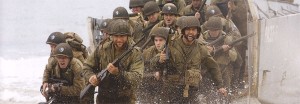 The half-brothers deal with the death of their father the best way they know how—they kill other people. They relocate approximately 3,000 miles to the United States (where all the good wars happen) to fight in the Civil War and every major conflict America found itself involved in for the next 100 years (apparently, both brothers are immortal as well as being good healers and having claws). Things turn sour during the Vietnam War, as Creed’s vicious nature as becomes too much for even that era’s U.S. Military (his actions eventually get the brothers in front of a firing squad, which is surprisingly ineffective). Creed (Liev Schrieber), however, is just right for a Black Ops group composed of mutants that Major William Stryker (Danny Huston) is starting up called Team X. Howlett joins his brother in his new job for a while, but eventually leaves when the black ops get too black for his taste.
The half-brothers deal with the death of their father the best way they know how—they kill other people. They relocate approximately 3,000 miles to the United States (where all the good wars happen) to fight in the Civil War and every major conflict America found itself involved in for the next 100 years (apparently, both brothers are immortal as well as being good healers and having claws). Things turn sour during the Vietnam War, as Creed’s vicious nature as becomes too much for even that era’s U.S. Military (his actions eventually get the brothers in front of a firing squad, which is surprisingly ineffective). Creed (Liev Schrieber), however, is just right for a Black Ops group composed of mutants that Major William Stryker (Danny Huston) is starting up called Team X. Howlett joins his brother in his new job for a while, but eventually leaves when the black ops get too black for his taste.
James, now calling himself Logan, lives a simple life with his longtime girlfriend, Kayla Silverfox (Lynn Collins) in rural Canada when now Colonel Stryker comes to call. It appears that members of his old black ops team are being killed off by a mysterious assailant. That mysterious assailant turns out to be Creed, who attacks James and appears to kill Kayla.
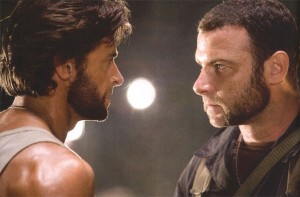 Incensed, Logan takes Stryker up on his offer of help and agrees to a process that will give him the advantage over his brother—the bonding of the indestructible metal Adamantium to his bones. The process is a success, but after it is complete, while being submerged under two feet of water and Styker standing at least five yards away, mind you, Logan hears Stryker planning to betray him. Naturally, Logan escapes and plans his vengeance.
Incensed, Logan takes Stryker up on his offer of help and agrees to a process that will give him the advantage over his brother—the bonding of the indestructible metal Adamantium to his bones. The process is a success, but after it is complete, while being submerged under two feet of water and Styker standing at least five yards away, mind you, Logan hears Stryker planning to betray him. Naturally, Logan escapes and plans his vengeance.
He tracks down the few Team X members that are still alive to find out where Stryker’s secret base is. No, not the secret base that Logan just escaped from, a different one (Stryker, apparently, was a big believer in having redundant systems). His buddies Wraith (will.i.am) and Dukes (Kevin Durand) say the secret base is named “The Island” and only one person has ever escaped from the facility—Remy LeBeau, a.k.a. Gambit (Taylor Kitsch).
Wraith and Logan track down Gambit in the hopes that LeBeau will reveal the location of the island. While Gambit and Logan fight, what people on the same side typically do in these movies, Victor arrives and kills Wraith. Logan and Victor once again fight, with Gambit coming into the battle on the side of Logan. Gambit realizes Logan is on the level and decides to take Logan to the same island he was willing to engage is thousands of dollars of property damage to keep from being taken back to.
“The Island” is Three Mile Island, which, in the X-Men film universe, was decommissioned and abandoned after the 1979 partial meltdown of reactor 2 (ours wasn’t—reactor 1 is still running today and has been since the accident) and is located in a remote area accessed only by plane, not smack dab in the Susquehanna River, about 15 miles from Pennsylvania’s state capital of Harrisburg, about 30 miles from one of the state’s biggest tourist towns, Gettysburg, 20 miles from one of the major colleges in the state, Dickinson College, and several miles from two airports, several major highway systems, and even a golf course. If the film TMI matched up with the real world TMI, it wouldn’t be all that hard to find.
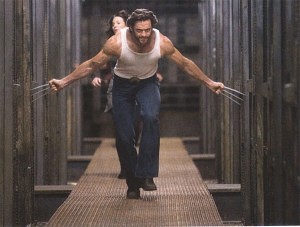 Anyway, when Logan arrives on “The Island” he finds Kayla is there and still alive. She is a mutant with the powers of persuasion who agreed to work with Stryker in order to keep her sister Emma, who Stryker is keeping captive, alive. Stryker’s ultimate plan is revealed. He was taking DNA from the mutants he captured and/or killed and put the genetic material into Team X member Wade Wilson (Ryan Reynolds), giving him all the powers the mutants had (a “Deadpool” of powers, nyuk nyuk) in order to become a weapon Stryker could use to kill all the mutants in the world.
Anyway, when Logan arrives on “The Island” he finds Kayla is there and still alive. She is a mutant with the powers of persuasion who agreed to work with Stryker in order to keep her sister Emma, who Stryker is keeping captive, alive. Stryker’s ultimate plan is revealed. He was taking DNA from the mutants he captured and/or killed and put the genetic material into Team X member Wade Wilson (Ryan Reynolds), giving him all the powers the mutants had (a “Deadpool” of powers, nyuk nyuk) in order to become a weapon Stryker could use to kill all the mutants in the world.
Logan and Deadpool fight. Victor arrives just in time to save Logan and they both defeat Deadpool. Professor Xavier arrives at the secret base that no one except Gambit knew the location of just twenty minutes ago and saves the captive mutants, including a young Scott Summers (Cyclops from the X-films). Kayla dies again, for real this time, and Stryker induces amnesia in Logan by shooting him in the head with an Adamantium bullet.
It would be easy to say that the script for this film was so bad due to the fact that so many plot elements had to line up with the rest of the X-Men film franchise. After all, Stryker had to be alive in time for X2 and Logan had to be suffering from amnesia at the start of X-Men. Any roads taken in this film would have to lead to there. But these limits shouldn’t result in a film like this. You could write a much better script, keep the continuity intact, and have a much better movie.
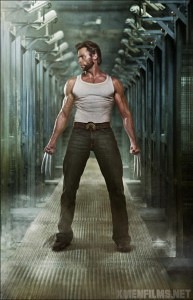 I could write another 1,000 words on all the plot holes and inconsistencies in the film, like, for instance, how a mutant whose power is to make you do whatever she says could ever be blackmailed in the first place (“Listen, I want you to release my sister, let me and her leave this facility right now, and forget we ever existed. Then you will dance around the complex singing ‘I Feel Pretty’ until you collapse,” said Kayla, in a much better version of the script in an alternate universe). Or why Stryker needed Logan at all. He went through this convoluted plot to get his hands on Logan for two reasons: One, to get the healing factor from his DNA to give to Deadpool and to see if someone with said healing power could survive having adamantium bonded to their bones. Well, he was employing Logan’s brother, who had the same healing factor as Logan, so he had a test subject already in his employ. Stryker, a man who hates mutants so much he is bioengineering an assassin so he can kill them better, tells the mutant Creed that he’d never survive the process. Why would he be concerned? Why would he care? Logically, he’d try the process out on Creed and if it worked, yay, if not, it’s a dead mutant.
I could write another 1,000 words on all the plot holes and inconsistencies in the film, like, for instance, how a mutant whose power is to make you do whatever she says could ever be blackmailed in the first place (“Listen, I want you to release my sister, let me and her leave this facility right now, and forget we ever existed. Then you will dance around the complex singing ‘I Feel Pretty’ until you collapse,” said Kayla, in a much better version of the script in an alternate universe). Or why Stryker needed Logan at all. He went through this convoluted plot to get his hands on Logan for two reasons: One, to get the healing factor from his DNA to give to Deadpool and to see if someone with said healing power could survive having adamantium bonded to their bones. Well, he was employing Logan’s brother, who had the same healing factor as Logan, so he had a test subject already in his employ. Stryker, a man who hates mutants so much he is bioengineering an assassin so he can kill them better, tells the mutant Creed that he’d never survive the process. Why would he be concerned? Why would he care? Logically, he’d try the process out on Creed and if it worked, yay, if not, it’s a dead mutant.
But logic has no place in this script. It is less a cohesive tale than a group of big moments lined up one after another. Kayla serves as the dutiful girlfriend until she doesn’t. She dies (BIG DRAMA!) only to re-appear later (BIGGER DRAMA!!) and be revealed to have betrayed Logan (OOH! MEGA DRAMA!), but eventually redeems herself again so Logan can mourn her again (MONDO MONDO DRAMA!). Who cares if these events are convoluted to the point of being nonsensical, and the character is so thinly drawn that the impact is lessened.
The Wolverine, being released next week, appears to be better.
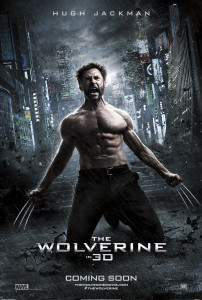 It uses the legendary Chris Claremont and Frank Miller Wolverine miniseries as a framework. Logan is brought back to Tokyo by man named Shingen who owes Logan a great debt. Logan saved Shingen’s life during World War II and he intends to repay that debt by giving Logan his mortality back. Being that he is constant being tortured by the memories of killing Jean Grey, Logan is ready to take him up on that offer. Of course, the offer doesn’t go off all that smoothly and Logan quickly runs into situations that his healing power would be an asset.
It uses the legendary Chris Claremont and Frank Miller Wolverine miniseries as a framework. Logan is brought back to Tokyo by man named Shingen who owes Logan a great debt. Logan saved Shingen’s life during World War II and he intends to repay that debt by giving Logan his mortality back. Being that he is constant being tortured by the memories of killing Jean Grey, Logan is ready to take him up on that offer. Of course, the offer doesn’t go off all that smoothly and Logan quickly runs into situations that his healing power would be an asset.
However, even this installment wasn’t without a bit of difficulty. Bryan Singer was offered the chance to direct the film, yet refused. Darren Aronofsky was announced as director, but lasted only five months before stepping down. James Mangold eventually stepped in and took over the directorial reins.
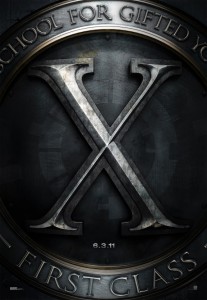 X-Men: First Class was Fox’s other foray into X-Men history, but originally it was supposed to be another film. The plan was to make an X-Men Origins: Magneto, detailing not only the early part of Magneto’s life in the concentration camps, but also the beginning of his friendship with Charles Xavier, who would have been a soldier who liberated the camp Magneto was in. The concept was later updated to 1962, and Xavier and Magneto would unite to face a common foe.
X-Men: First Class was Fox’s other foray into X-Men history, but originally it was supposed to be another film. The plan was to make an X-Men Origins: Magneto, detailing not only the early part of Magneto’s life in the concentration camps, but also the beginning of his friendship with Charles Xavier, who would have been a soldier who liberated the camp Magneto was in. The concept was later updated to 1962, and Xavier and Magneto would unite to face a common foe.
Bryan Singer states that his treatment for X-Men: First Class was not inspired by the script for X-Men Origins: Magneto, even though the pair team up to take down a common foe in 1962 (The Writer’s Guild disagreed, and Sheldon Turner, who wrote X-Men Origins: Magneto, receives a writing credit on the film). Singer’s treatment, fleshed out by Jamie Moss, Ashley Edward Miller and Zack Stentz, embroiled the pair in a plot that involved the Hellfire Club, the Cuban Missile Crisis, and would have been directed by Singer and have a tone similar to Singer’s X-Men films.
Then Singer backed out as director and Matthew Vaughn stepped in. Vaughn rewrote the script with Jane Goldman and changed the tone of the film to that of a Pop Art artifact, the type of X-Men film that would have been made if they made a film when the X-Men comic first came out (and modern day special effects were available then too).

That tone, and the spectacular acting by Michael Fassbender as Magneto and James McAvoy as Xavier, makes for an entertaining film. Yes, there are flaws, like the notable ways the film separates itself from the previously establish X-film continuity and the incredibly bad acting job January Jones does, but all in all, it was a fun ride.
Vaughn was set to return for a sequel, but his involvement in bringing Mark Millar’s Secret Service to the screen had him back out to the role of a producer. Bryan Singer signed on to direct and the film want from being the second installment of the First Class franchise to a film that ties that franchise and Singer’s together. The film is named X-Men: Days of Future Past and will be partly based on that legendary storyline from the comics.
Next time, we begin our look at the films made from the works of one of comics’ best and most controversial writers, Alan Moore.


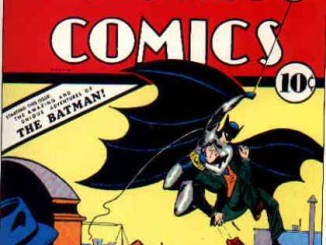

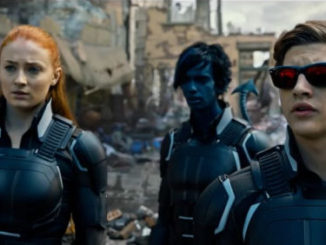
Michael Martin liked this on Facebook.